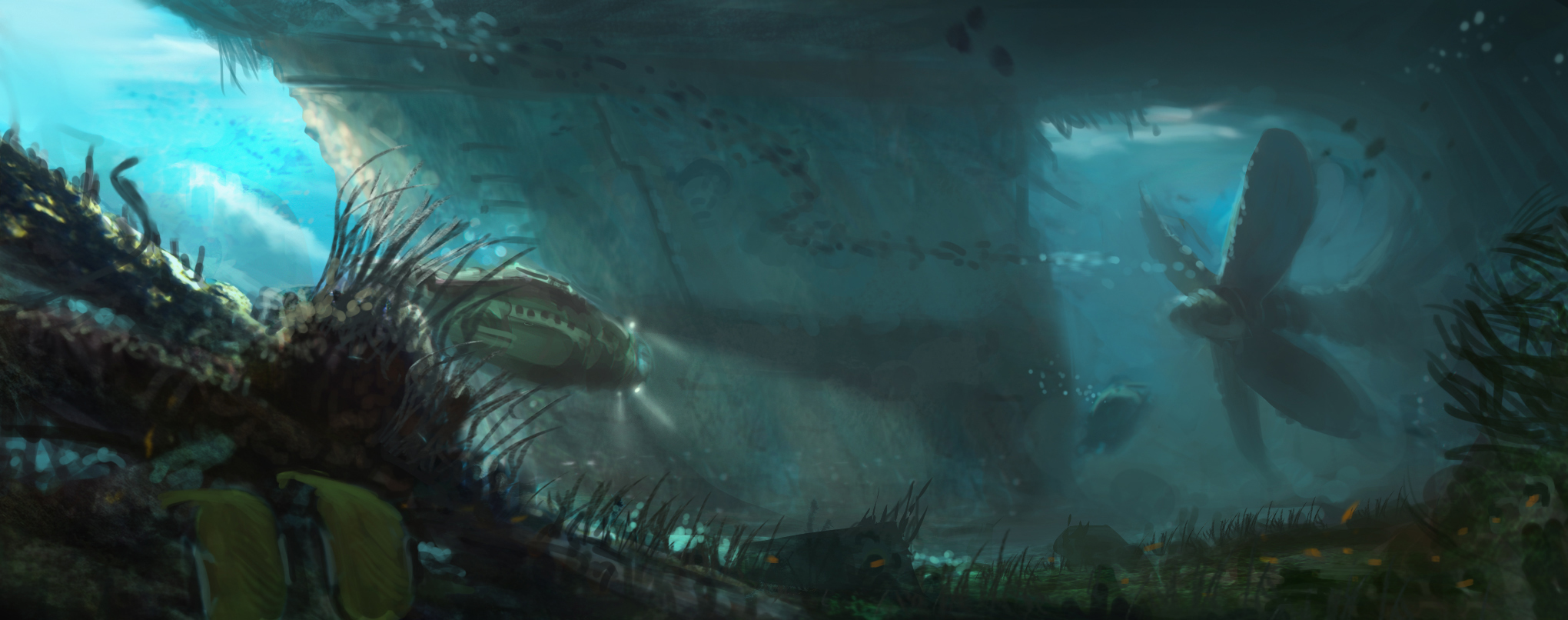In the upcoming weeks I will start posting a series of articles about composition and its rules. Rules and methods you can apply to make your images more attractive to look at and more understandable for the viewer.
We’ll kick off the Composition 101 series with the question: ”What is Composition?”
What’s composition?
We use compositions in our concepts and illustrations to make the images more pleasing to look at. We can do so by positioning and arranging objects in a certain way. This way of positioning will affect how the viewer looks at your image and how they will perceive it. Your composition decides how long you keep the viewer interested in your work and how their eyes move through your work. After all, you don’t want your hard work to be glanced at for only a couple of seconds.
Why do we need a composition?
All images with strong compositions have one thing in common, it is immediately clear where to look at. They all have a dominant feature in the image to which the viewer is attracted first. It’s your job as an artist to make it clear to the viewer what that primary focal point is. On top of that, you try to keep the viewer’s eye inside the work as long as possible.
Research shows that the eye does not flow in smooth lines or curves. It leaps from one focal point to another. Wherever the eye tends to focus in a picture is called a focal point or center of interest. Multiple focal points in an area are defined as focal area. Next to a primary focus, you can also have a secondary and tertiary focus point
So why do we need a composition and a center of interest?
To make images more appealing to look at and to create a clear message to the viewer. The center of interest is the star in your play
In practice
You can ask following questions when planning your composition:
- What is the image about?
- Do I have a focus point?
- Is it clear what I try to say?
- Can I clearly see what is going on?
- What does the viewer needs to feel and think?
- What can we leave out without changing what we are trying to say?
- Is the camera angle motivated by the story point?
In the upcoming weeks I will address the following rules and explain them more in depth. Please note that these rules can be used as suggestions. Some people are more intuitive for it and might even use them already:
- Contrast
- Leading lines
- Complexity vs Simplicity
- Balance and visual weight
- Point of view / Perspective
- Framing
- Avoid tangencies
- Depth
- Breathing space
- Rule of Thirds
I discussed following topics in my Composition 101 series:
Composition 101: Add Leading Lines to improve your compositions
